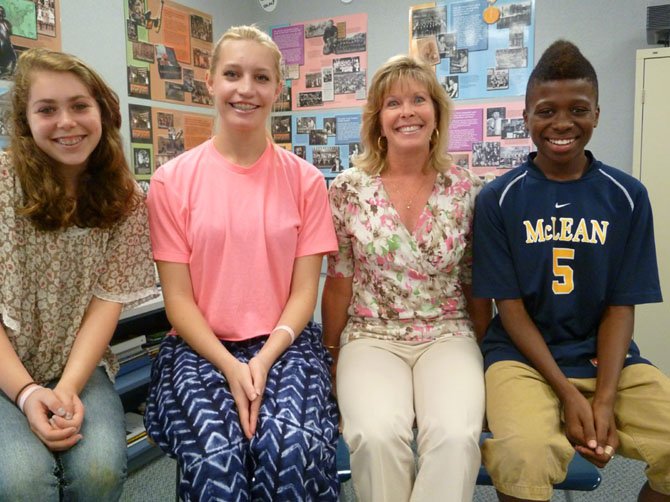Potomac — “Once I learned American Sign Language (ASL) I never looked back. I knew I was meant to spend my life and career utilizing American Sign Language. Now I am excited that every day I have the chance to teach it to students — most are as fascinated as I am with learning to sign.”
The McLean School’s Denise Duffy signed up for an ASL class her senior year in college. The communications major took the class — and “just knew.” After graduating, she enrolled in a master’s program at Gallaudet University and worked as an educational interpreter. “I studied hard and quickly learned to sign. Since I was at Gallaudet, I was totally immersed in a deaf community and all my friends and my boyfriend were deaf, so it was easy to become proficient. I love the language and the culture.”
Duffy has been teaching ASL at the McLean School for three years and previously taught for many years with Fairfax County Public Schools. She is one of 100 winners in the U.S. being recognized as the most innovative educators in our nation. She was recently presented with a check for $2,000 by Jeff Williams of ING, the corporation which sponsors the “Unsung Hero” program. Since honoring the first “unsung hero” in 1996, ING has awarded nearly $4 million to 1,700 educators across the U.S. Duffy was selected from more than 1,300 applicants. While teaching full time at McLean, she also finds time to attend George Mason University as a full-time master’s degree student in educational transformation.
Duffy’s winning grant proposal is entitled “Hearing to Deaf: Enrichment and Understanding.” The funds will provide a laptop and new educational tools for the hearing students at McLean who are enrolled in her ASL classes. The laptop computer will be equipped with the OOLOO software capability which will allow her students to see and communicate (using sign language) with students who attend schools for the hearing-impaired. OOLOO software is much like Skype and gives students the opportunity to view one another when they are both on-line. The project will provide ASL students the opportunity to utilize their signing skills with deaf students. It will also allow hearing students and hearing-impaired teens to form bonds of friendship and understanding.
Duffy said, “This project gives students an opportunity to be immersed in communicating primarily through ASL. Many students are frightened to try their newly-learned skills, and this gives them a chance to get immediate feedback, to learn the nuances of communicating — and even the slang or short-cuts that the deaf use. They will also gain an understanding that deaf students are teens, just like themselves — and have the same fears, anxieties and feelings. This project will give ASL students a chance to become more fluent while building respect for the deaf community. The hearing-impaired students will also have a chance to learn from the hearing students — so both students will benefit from the relationship.”
Students at McLean are choosing to study ASL for many reasons. Marc Loud chose ASL because he had previously struggled with Spanish and French. “It seemed like fun. I used to see Ms. Duffy all the time because her classroom was near the band room, and I was in band. I signed up and it’s one of my favorite classes. I have taught my brother how to sign, so now we have a ‘secret language’ that my parents don’t know.”
Student Sarah Morris had trouble with English grammar and has found that ASL has helped her learn English better. Spencer Carmel previously took Latin and found it really hard. “ASL is a good fit. I am really enjoying it,” she said. “I hope to continue and major in it in college. Maybe one day I will be the ASL teacher at McLean — or at another school. I love it.”
Duffy finds that most students with learning difficulties do well in her class. “It’s kinesthetic. At McLean, students really give thought to their learning styles and many students recognize that they learn best with a hands-on approach. That defines ASL.”
Spencer, Marc and Sarah all expressed their feelings about the communication experience with the hearing-impaired students. Marc said, “I feel a little nervous and awkward because I know they will be better at signing than I am — but that’s the only way I’ll get better.
Spencer added, “I will be nervous, but I know it will be a lot of fun too, and I look forward to having a friend who can sign back to me. Sarah also feels nervous but said, “It will be a good experience. My parents think this class isreally great — and very useful. They hope I continue and use it in my career.”
“This year, my goal was to incorporate technology into my classes,” said Duffy. “And now ING has made that goal truly possible. I am elated.”
